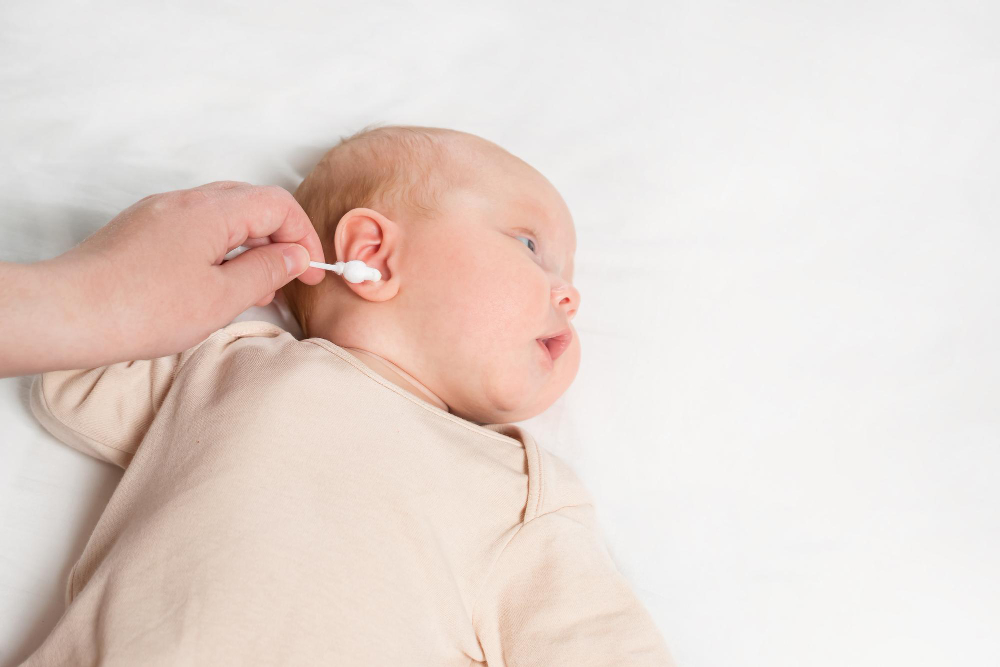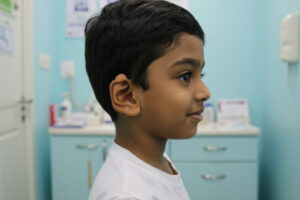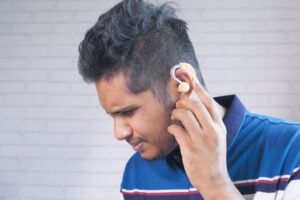If you’re a parent, you’ve probably found yourself peeking into your child’s ears and wondering, “Should I be cleaning this?” It’s a common question, and one I hear often during checkups.
Ear hygiene feels like something we should be on top of. But when it comes to cleaning a child’s ears, it’s surprisingly easy to do more harm than good. A little earwax is normal and even healthy. The problem starts when we try too hard to remove it.
The truth is, in most cases, you don’t need to do much at all. And when ear cleaning is needed, there are gentle, safe ways to go about it.
What Earwax Actually Does
Most parents are surprised when I tell them that earwax is actually a good thing. It’s not dirty. It’s not something you need to scrub away. In fact, it’s the body’s way of protecting the ear.
Earwax helps trap dust, dirt, and anything else that shouldn’t be going into the ear canal. It even has natural antibacterial properties. And because it keeps the skin inside the ear soft and moisturised, it prevents itching and irritation too.
The best part? The ear cleans itself. In most children, earwax slowly works its way out on its own. You might notice a bit around the outer ear or after a bath, and that’s completely normal.
Unless your child is showing signs of discomfort or blockage, there’s usually no need to remove earwax at all.
Common Mistakes Parents Make
It’s easy to feel like we should be cleaning every part of our child’s body, and their ears are no exception. But in the case of ear cleaning, some common habits can actually do more harm than good.
One of the biggest mistakes I see?
Using cotton buds. Parents often reach for them to clean inside the ear canal, but this can push earwax deeper, causing a blockage or even damaging the delicate skin inside the ear. The ear is self-cleaning, so there’s no need to use cotton swabs inside.
Another mistake is overcleaning. Some parents feel the need to constantly remove any wax they see, but this can lead to irritation or even ear infections. Remember, a little wax is normal and healthy!
And then there are the home remedies. From ear candles to homemade solutions, many of these can be risky. They might cause burns or introduce bacteria, which is the last thing we want for our little ones.
When to See a Doctor
- Your child is tugging at their ear: This could be a sign of discomfort, blockage, or pressure in the ear.
- They are not hearing you clearly: If they keep asking you to repeat things or seem distracted, their hearing might be affected.
- They say their ear hurts or feels full: This might point to an infection or fluid buildup that needs checking.
- There’s itching, fluid, or even a little blood: Any unusual discharge from the ear is reason enough to come in.
- They seem off balance or unsteady: Balance is closely linked to the inner ear. Sudden clumsiness or dizziness should be looked at.
Safe Ways to Keep Ears Clean
- Focus on the outer ear: When it’s bath time, just grab a soft washcloth and gently wipe around the outer ear. This is usually all that’s needed to keep things clean. No need to worry about cleaning inside the ear canal.
- Keep the hair around the ears clean: If your child has long hair, make sure it’s not trapping oils or wax near the ears. Keeping this area clean can help avoid any buildup or discomfort.
- Don’t dig inside the ear: It’s tempting, I know, but resist the urge to stick anything inside your child’s ear. The ear is actually pretty good at cleaning itself, so you don’t need to go in there.
- Gently remove any visible buildup: If you notice earwax around the outer ear, you can use a damp cloth or a few drops of warm water to gently soften and remove it. It’s a simple way to keep things comfortable.
- Use ear drops for children over 1: For kids older than 1, you can use gentle ear drops to help soften wax if needed. But always check with your doctor first before putting anything in the ear.
Conclusion
Ear care doesn’t have to be complicated. A simple wipe of the outer ear is usually all that’s needed, and as long as earwax isn’t causing problems, there’s no need to clean it out.
If you notice anything unusual or have concerns, feel free to reach out. I’m here to help! Just book a consultation if you’d like peace of mind about your child’s ear health.







